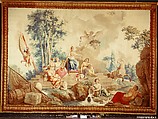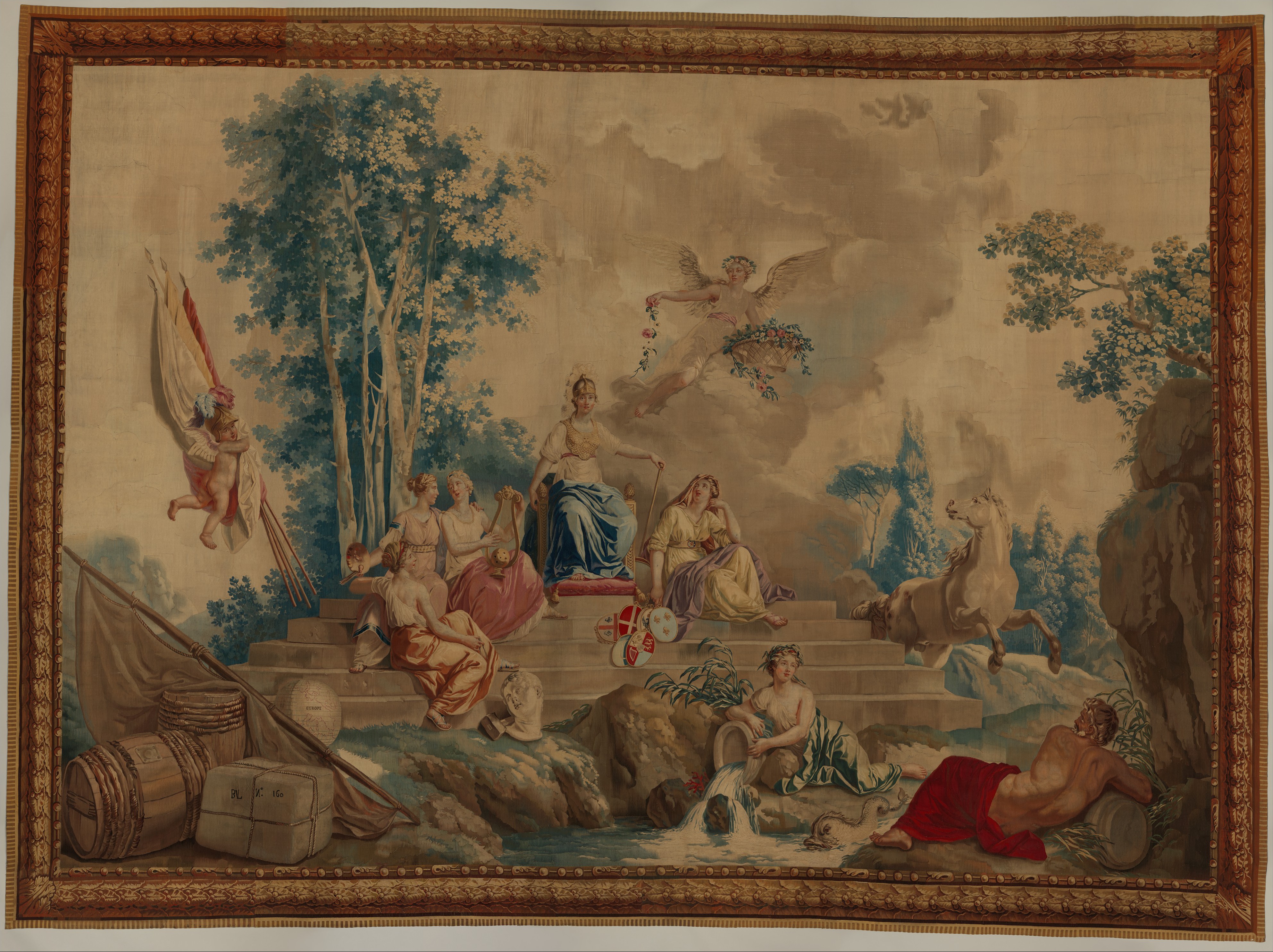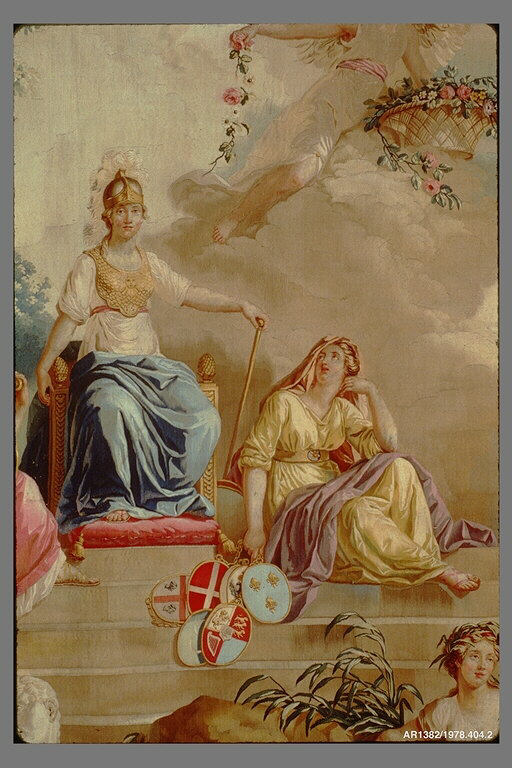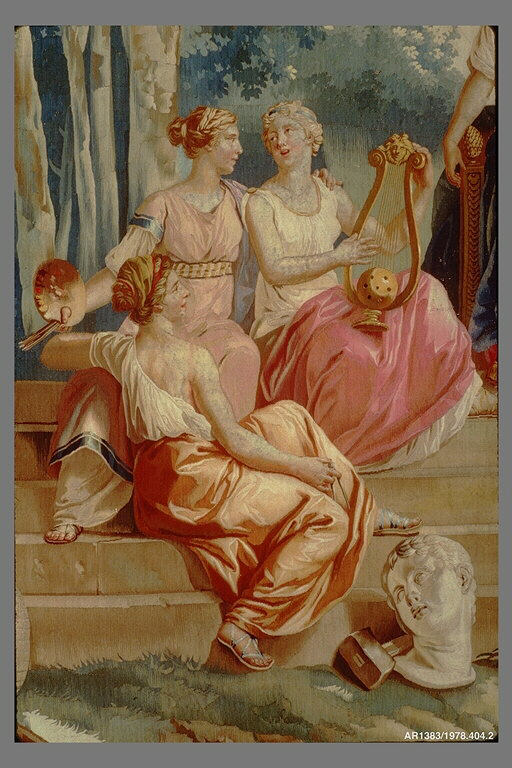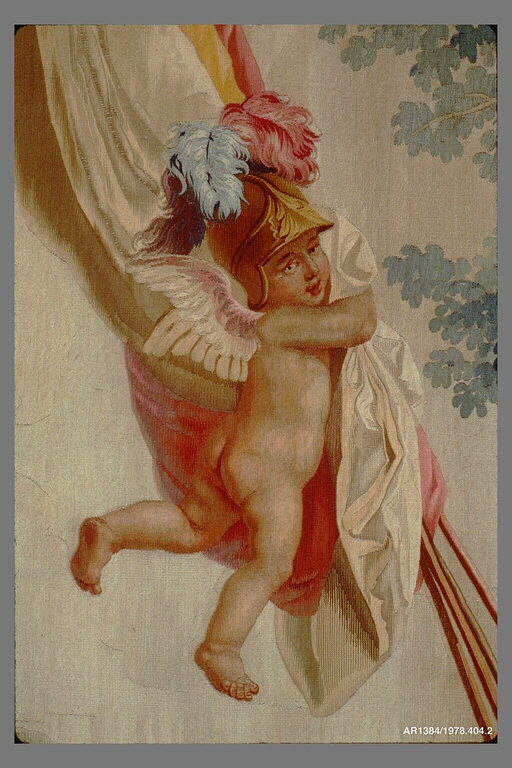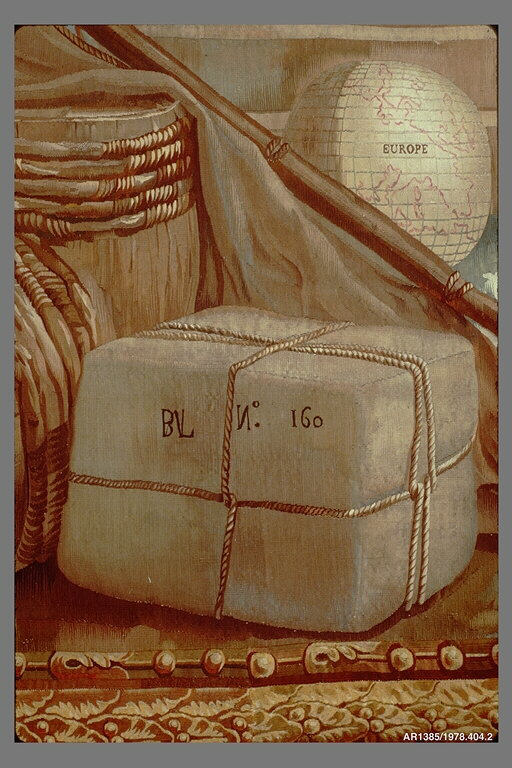Europe from a set of The Four Continents
Not on view
This work is from a suite of four remarkable tapestries with coordinating upholstery was commissioned by Louis XVI, perhaps as a diplomatic gift to George Washington. The suite's survival is miraculous, given the upheaval of the French Revolution and the fact that they were made for the French king, who was guillotined in 1793.
In the sixteenth century, Europeans began portraying the Four Continents as human figures surrounded by details that marked their status relative to Europe. By the time these tapestries were made, the Four Continents iconography was well established. In the Beauvais tapestries, Asia basks amid precious spices, tea, pearls, porcelain, and silk. Africa accepts trade goods in exchange for ivory and ostrich feathers as she reigns over a wilderness of dangerous beasts. Europe, seen here, is surrounded by symbols of the arts and war as well as commerce, marked by the barrels, a bale, and a sail in the lower left corner.
The depiction of America as a demure young woman sets this iconographic scheme apart. In earlier representations she is a scantily clad, spear-toting, armadillo-riding, cannibalistic warrior princess. Here she appears modest and dependent on the protection of Liberty and Minerva, the goddess of war and wisdom whose shield bears France's fleur-de-lis. In addition to this iconographic shift, the Indian princess, who had originally stood for the entire Western hemisphere, here represents only the United States. This reworked concept of America defended by France (Minerva), symbolizing France's support during the American Revolution, was suggested by none other than Benjamin Franklin.
This image cannot be enlarged, viewed at full screen, or downloaded.
This artwork is meant to be viewed from right to left. Scroll left to view more.
